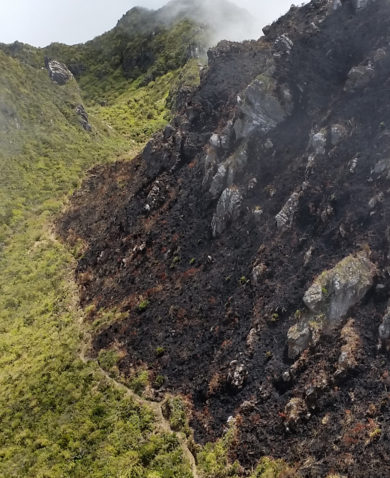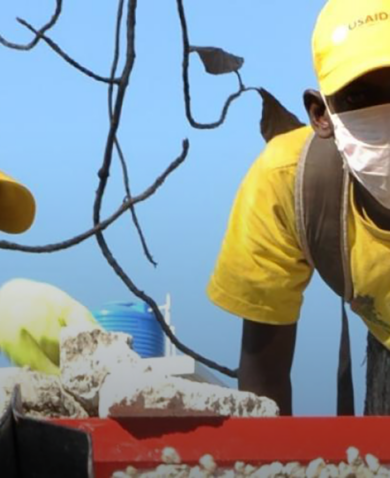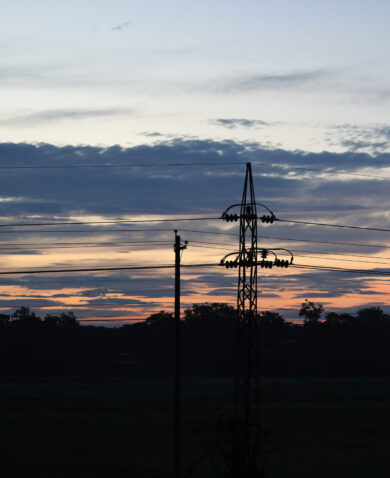
Managing for Climate Risk
July 31, 2018 | 3 Minute ReadWhat does climate risk management mean for global development programming? Hailey Keuck shares insights from the June Adaptation Community Meeting.
This post originally appeared on Climatelinks.
A changing and more variable climate —threatens to undermine development interventions or investments to improve the lives and livelihoods of vulnerable people.
At the June Adaptation Community Meeting, four climate change risk specialists from leading development organizations—USAID, the World Bank, the International Finance Corporation (IFC), and the Inter-American Development Bank (IDB)—came together to discuss how their respective organizations are thinking about climate risk and what processes they are putting in place to improve resilience to both current and future climate, as well as safeguard development gains.
To varying degrees all of the organizations are trying to identify–though screenings or assessments–how and to what extent increasingly frequent, longer and more severe droughts, heat waves, floods and extreme weather events will affect investments, and¬ how to use that analysis in project planning, design and implementation.
Ana Bucher, senior climate change specialist at the World Bank, and her team have been developing risk screening tools (such as the Climate Change Knowledge Portal) since 2014. Based on feedback and use, they have developed two different processes: a rapid assessment and an in-depth screening assessment that provides an analysis of exposure (high-low), identifies impacts on various sectors, and suggests possible adaptation actions to reduce risk.
“One key challenge of a screening process like this,” said Maricarmen Esquivel, climate change specialist at the IDB, “is that while screening should be done as early as possible to identify high and medium risk projects that require further analysis, often the exact details of the project location and activities are not known.” This underscores the need for iteration and adaptive management.
USAID illustrated what this iterative process could look like. Since 2015 USAID has been systematically integrating climate risk management (CRM) into strategies, projects, and activities. Today, USAID has guidance documents and supporting resources in place that provide staff and implementing partners with the information and tools needed to assess, address, and adaptively manage for climate risks.
A recent stocktaking exercise found that CRM has been applied to 95 percent of new programming and is relevant to a large portion of USAID’s portfolio. USAID intends to follow up on what it learned from the stocktaking with greater attention to raising awareness of the CRM process and resources to support it. USAID will also focus on CRM follow-through to encourage incorporating results of climate risk assessments into solicitations, implementation, and monitoring, evaluation, and learning processes.
This issue of post-screening follow-through (moving from assessment to integration into project design and implementation), was a challenge recognized by all the organizations. “Operationalizing is hard,” admitted Becky Chacko, senior climate change specialist at USAID, “but part of the solution is to build internal capacity building for people working in a variety of non-climate sectors, to just get them thinking about these issues so they can design better programs.” Esquivel highlighted the importance of building capacity within the country to both develop climate information and implement adaptation actions.
David Gibson, a senior environmental specialist from the IFC, added that simplifying messaging to both internal and external stakeholders on climate risk is key. The climate adaptation and mitigation discussion and attention to long-term projections need to be more practically trained at the transaction level for many financial institutions. Although the IFC does identify climate risks and impacts within its risks assessment framework under Performance Standard 1 (Assessment and Management of Environmental and Social Risks and Impacts), there are not yet detailed requirements for climate risks in particular investments. The IFC is increasing the use geospatial analytics and real-time weather models to assess business continuity and environmental, social, and governance risks related to climate variability (e.g. floods, fires, droughts). The IFC is also developing new Risk Resilience Management Tools to site sectoral climate risks more consistently.
While many challenges remain—such as capacity building and developing indicators of success—the benefits of managing for climate risks are clear. In the recent stocktaking exercise, USAID found that CRM improved sustainability and resilience of program activities, reduced exposure to climate hazards, and allowed for overall better program design. CRM, then, should not be thought of as an obstacle to bringing new projects online, but rather as an integral part of creating a pathway to greater development impact.
Blog posts on the Chemonics blog represent the views of the authors and do not necessarily represent the views of Chemonics.















